Fair season is back! All across Lancaster County, competitors will be vying for those treasured blue ribbons. Folks take their food seriously and on the periphery, there’s always that reoccurring question: what makes for a strong fair entry? What are the food judges looking for and evaluating and what makes a winning entry? I was offered a behind-the-scenes look as judges at the Solanco and Ephrata fairs evaluated food submissions and offered advice on the many dos and don’ts that apply to creating a winning entry.
When asked to name their favorite episode, fans of The Andy Griffith Show often point to The Pickle Story. Aunt Bee, of course, was known as an excellent cook – except when it came to making pickles! For her 12th try at creating the perfect pickle for the county fair, she was determined to beat the perennial winner, Clara Johnson, who just happened to be her best friend.
With each test run, Andy, Opie and Barney Fife were invited to critique the resulting pickles. They lied and told Aunt Bee that her pickles were delicious but when she was out of earshot, they described the pickles as “kerosene cucumbers.”
On the day of the competition, all eyes were riveted on the judges whose reactions were in line with the kerosene description. In the end, Clara won the contest and Aunt Bee graciously congratulated her … and vowed to try again next year.
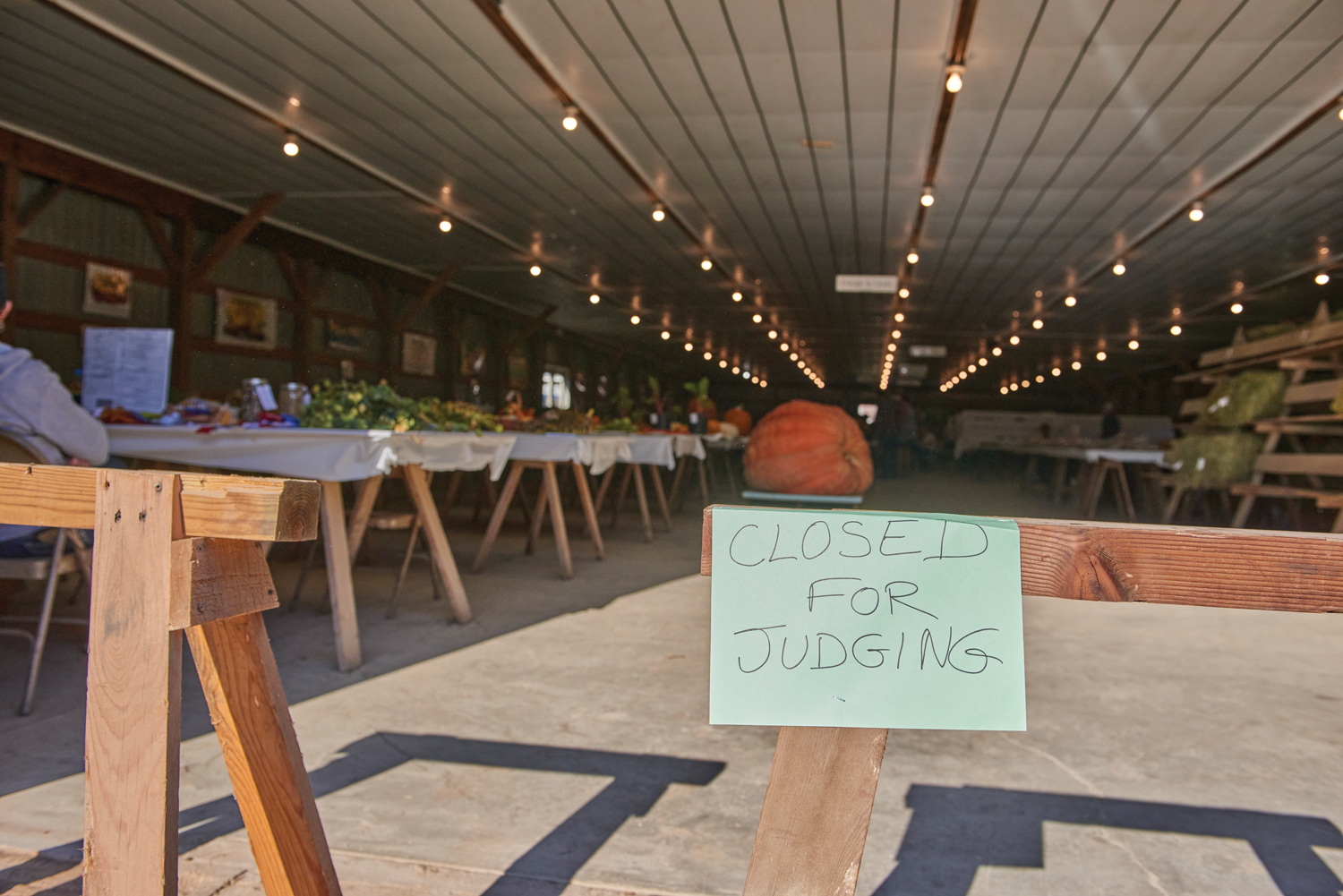
The Hoffman Building at the Solanco Fairgrounds is closed to the public while judging for produce, canned products and baked goods takes place.
A Rich Tradition
On a picturesque, late-summer morning in Quarryville, I immediately sensed I was walking into a rich, local tradition. It’s a gorgeous area of the county that I don’t often visit. In fact, it was my first time visiting the Solanco Fair. Raised in New Holland, whose fair is usually held the first week in October, it seemed warm for fair weather.
The building hosting food exhibits whirled with activity. First, I said hello to Martha Zepp of Penn State Extension’s Lancaster office, who was settling in at the jam and jelly table. I later spent much of the morning practically participating in the judging process with Martha in an effort to learn how it’s done.
I then made a beeline towards the baked goods section, where I met Elaine Knight, one of the many volunteers assisting in the judging process. While Elaine no longer submits for judging, she is one of three generations in her family who specialize in baking apple pies. According to Elaine, she’s been helping at the Solanco Fair for “46 years, missing once in 1981.” She goes on to explain that she skipped 1981 because of the imminent birth of her son. “He came late, anyway,” says Elaine. Anticipating her absence from the fair, she had asked a friend, Doris Aument, to step in for her. Doris hasn’t missed a year since then, either.
There is an incredible sense of community and pride here. Folks take off work to volunteer and compete. Traditions have been passed down from generation to generation. At every turn, someone has a shared connection or history. With the exception of secret family pie recipes, they offer much to learn from and it’s not merely about food, but about local history and the people who live in the Southern End. These many folks offered to pull back the curtain to offer insights to entrants hoping to improve their submissions and their chances of winning a ribbon.
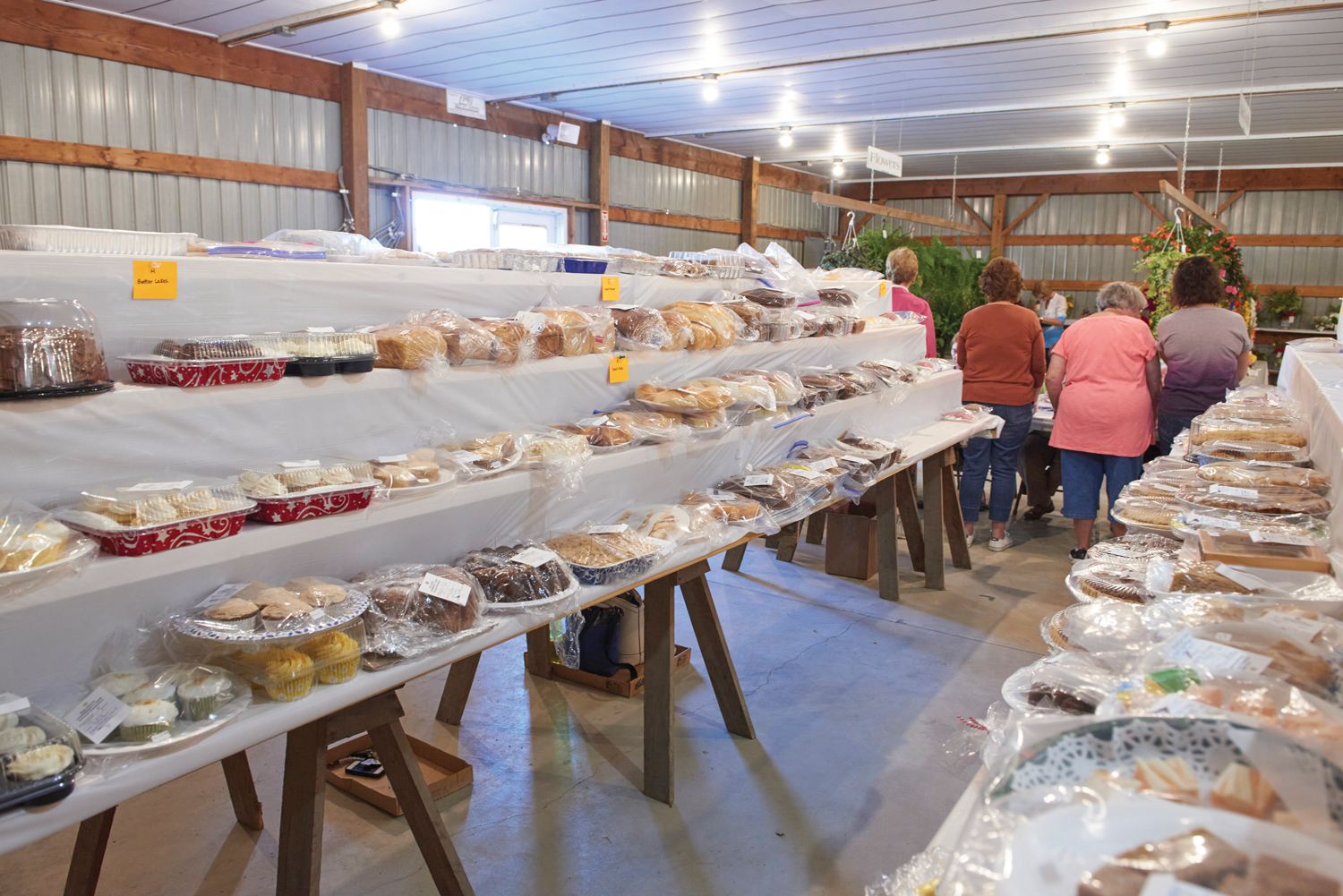
Baked goods are ready for judging, exhibit and sale at the 2019 Solanco Fair. The fair’s four special categories include the Blue Ribbon Apple Pie, Pennsylvania’s INCREDIBLE! Angel Food Cake, Homemade Chocolate Cake and PA Preferred Junior Baking contests. A small sample of each item is judged, with the larger portion packaged for public sale in the Hoffman Building, splitting the proceeds between the Solanco Fair and the Quarryville Fire Company.
To go with the insights of the many volunteers, there was much to learn simply by observing judges at the Solanco Fair and a week later at the Ephrata Fair. Judging takes place behind closed doors where food is evaluated by category, picked apart, sampled and evaluated by small panels of volunteer judges. They were also kind enough to answer every question I posed.
Because many of them represent multiple Penn State Extension offices, their position in the food world makes for knowledgeable judging. As a bonus, they offer on-site information on safe (and tasty) scientifically tested food preservation methods at the fairs. Hopefully, their knowledge and insight will inspire you or someone in your family to elevate or even start a fun, annual tradition of competing at community fairs.
Canning Dos and Don’ts
Have you ever visited the food exhibits at a community fair and wondered how an entry wins a blue ribbon? Believe me, where canning is concerned, a lot of work goes into presenting those colorful jars! What follows are some tips to create an award-worthy entry.
Jars should be clean and free of residue and adhesive labels. Hot, soapy water, rubbing alcohol or Goo Gone work wonders to remove labels, permanent marker ink and adhesive residue.
Lids should have a fingertip tight seal from a pressure canner, water-bath canner or atmospheric-steam canning process, depending on the recipe. After a seal forms, remove rings and wipe clean and dry, free of rust. If a ring has rust, discard it. You would be amazed at how often entries have rusty lids or old labels.
Entries prepared using an open-kettle canning method will not reach temperatures high enough to kill harmful pathogens or to form a strong sealing lid. Seal strength will be tested and entries with a weak seal (or altogether lacking one) will be eliminated from the competition, as the food is not safe enough to judge on flavor.
Keep jars upright when canning; turning them upside down offers no processing benefit or better seal. In one instance, a jar of jelly was turned upside down while cooling and incorrectly developed headspace at the bottom of the jar. There is no need to turn jars upside down for a seal to form.
Nailing the proper amount of headspace is an easy box to check and should not be overlooked. Don’t overfill your jars! That extra space isn’t stingy; it ensures a clean seal in the canning process and it looks attractive.
When entering a product, be sure it is properly labeled and entered in the correct category. You don’t want to miss out on it being judged in the proper category, such as entering a jelly into a jam category.
Due to the work involved in canning, you will likely end up with many filled jars, so take care to select one that meets all of the above qualifications. In contests where appearance and process are judged, missing more than one visual or processing criteria is a quick path to elimination.
Jams and jellies are taste-tested by judges, so flavor and consistency factor into the winning entries. I taste-tested sumac jelly, which has a curious, tangy flavor. I’m now a fan. Note: Edible sumac is red (Staghorn) sumac, where as poison sumac is yellow, white and gray.
If a category has many submissions, only the best in presentation with a strong seal and proper headspace will be taste-tested, as they otherwise would not earn enough points to place.
Canned vegetables, meats and soups are judged on appearance only. They are low-acid foods and have the risk of botulism.
Fruit and vegetable preparation is everything and this is a situation where the judge makes a difference. For example, if canned properly, using a scientifically tested, food-safe method, white cherries darken from heat. While a lighter, blanched appearance looks aesthetically pleasing, it is superficial. This came up time and again in conversation among the judges, as the food is not fully preserved. Were I to prepare a submission, I would submit darker vegetables prepared true to the intent of showcasing home-grown produce.
Some participants submit dozens of entries. They often use custom, self-inking stamps to swiftly fill out entry tags at each fair. A single canning session with enough yield can easily be spread out across multiple fairs and winning entries can rack up earnings. For all the work that goes into canning, there is a case to be made for entering in multiple contests. This is fine, so long as subsequent entries are not made under the false pretense of someone else’s name for double the chance of winning a prize.
Baked Goods
I think you’ll agree, where judging is concerned, this has to be a “sweet” assignment. Pies, cakes, cookies and other sweets not only look tasty but some of them are just gorgeous to look at. Unlike specific canning categories, baked goods are always evaluated on taste by a panel of judges.
Some tips to follow:
Cookies comprising an entry should be uniform in shape, size and consistency. Don’t overdo it with chocolate chips – try to keep the numbers uniform. Bake more than you need, and select the nicest from each batch. If you have too many “seconds,” I know someone who will gladly take them off your hands.
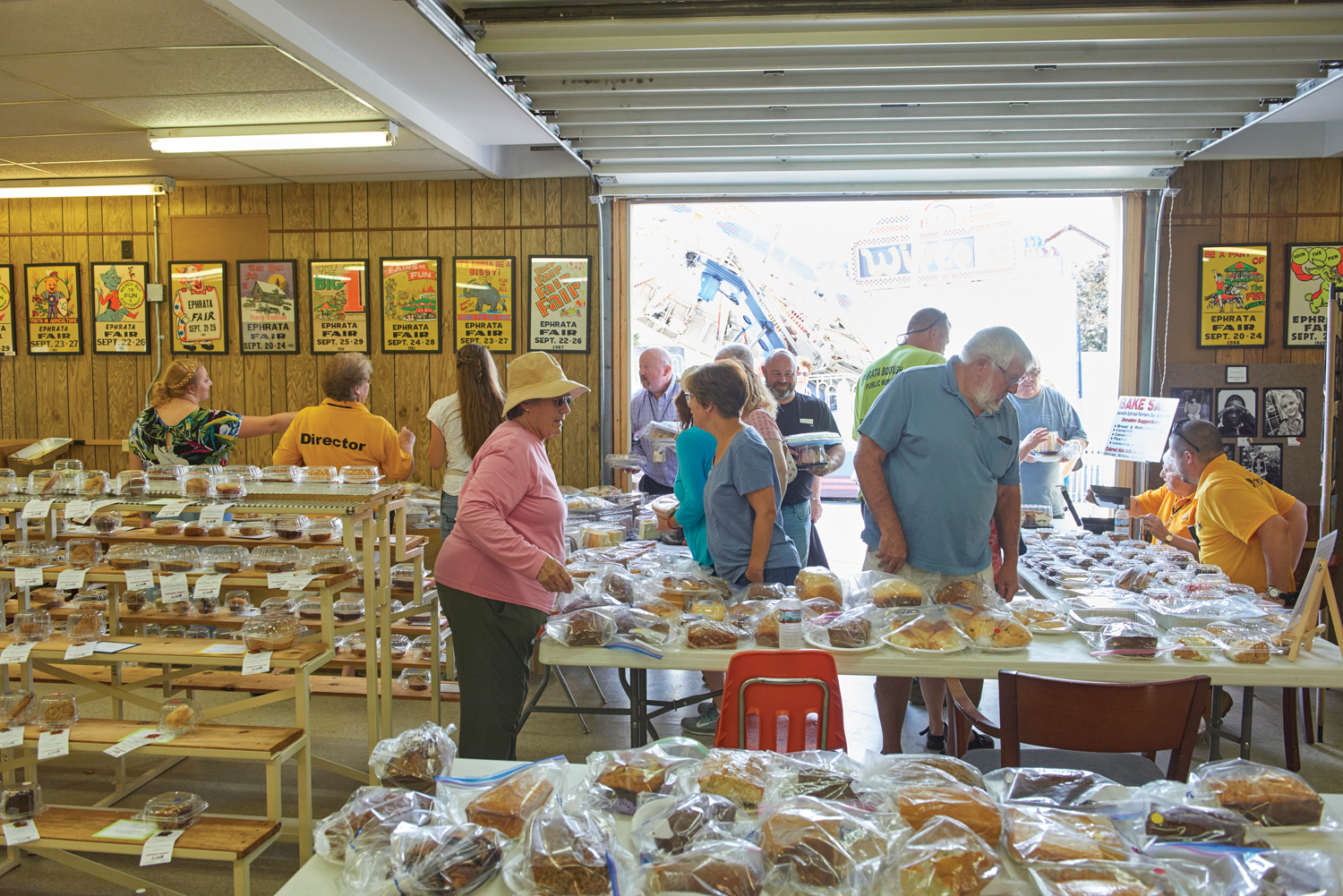
Fair-goers await the sale of baked goods following judging in Ephrata. Proceeds benefit the Ephrata Fair.
I understand some fairs auction off the leftover baked goods after judging. In Ephrata, the remaining cookies, pie and cake slices are sold to the community promptly at the end of judging. There will be a crowd queued outside, so don’t hesitate. Funds raised benefit the Ephrata Fair Association.
Look for secondary categories where your entry might be eligible. For example, you can double your chances with a category such as “PA Preferred.” If your ingredient list is made with all PA Preferred ingredients – products made within the state and produced by members of the program – you may be able to enter a second plate from the same batch. Using PA Preferred apples, milk, butter, eggs, etc., your apple pie could have double the chances of taking home a prize.
Divide and conquer by freezing. If your baked goods hold up to being frozen, one large batch can be divided and submitted to multiple fair competitions. As with canning, some highly organized participants have custom self-inking rubber stamps for signing multiple entries checking in at multiple fairs.
If you happen to bake a blue-ribbon winning apple pie at your local fair, you might go on to the Pennsylvania Farm Show in January. The Blue Ribbon Apple Pie Contest is a serious endeavor with specific criteria, where qualifying bakers earn their entry by winning a preliminary competition at a local fair. Sponsored by the Pennsylvania State Association of County Fairs, rules can be found at farmshow.pa.gov.
Personal Observations
I’d love to see new incentives created that encourage junior submissions. While the number of entries remains steady across most fairs, the number of entrants tends to be on the decline. To carry the tradition forward, I’d like to see a random or honorable-mention awardee in a junior category be given the opportunity to learn and/or prepare a recipe with a local small business. Or, provide him or her with a seat at a Penn State Extension workshop.
Offer a mid-summer workshop to the public on baking or safe canning methods in your town.
The original idea of canning was to preserve home-grown produce and not buy it at a supermarket or farm stand. This isn’t feasible for everyone, but the intention is sound. Were I to make the rules, I’d want the option to award bonus points if an entry supplies a photograph of the home-grown produce used in canning (without identifying anyone).
Something multiple judges commented on is that some contests require recipes/directions for canned-food submissions. Unlike a pie recipe, there’s no family secret to the canning process and it needs to be done safely. Even if everyone used the same recipe, the quality of the produce and of the canning process will lead to major differences in each entry.
Canning is a great way of preserving fresh, home-grown food, but there is an exact science to it. Safe canning methods, particularly in low-acid foods, should be encouraged for the safety of the judges. For those who say they’ve used untested recipes or wax seals for years without issue, it’s a matter of luck. Penn State Extension, whose staff often serve as judges at local fair contests, offers scientifically tested recipes at their office, online (extension.psu.edu/lets-preserve) and at their workshops held throughout the year.
Add experience levels for popular categories. It would be exciting to see a professional baking category added. Local bakers could submit larger entries, which could be sold as fundraisers after judging like the other submissions. Bakeries would have an objective claim to fame in the community until the next year.
Special thanks to the folks at the Solanco and Ephrata fairs for inviting me to your community events in 2019. Best of luck with your return in 2021!
2021 Fair Schedule
After a year’s hiatus because of Covid, Lancaster County’s fairs are back on schedule in 2021. Some may not be fully up to speed because of the pandemic, but the community aspect of celebrating the county’s agricultural heritage, enjoying delicious food and engaging in friendly competition will no doubt be on display.
Elizabethtown Fair
August 23-28. Entries accepted Monday, August 23. Etownfair.org
Denver Fair
September 14-18. Entries accepted Monday, September 13. Thedenverfair.com
Solanco Fair
September 15-17. Entries accepted Tuesday, September 14. Solancofair.org
Ephrata Fair
September 21-25. Entries accepted Monday, September 20. Ephratafair.org
West Lampeter Community Fair
September 22-24. Entries accepted Tuesday, September 21. Westlampeterfair.com
New Holland Fair
September 29-October 2. Newhollandfair.org
Manheim Community Farm Show
October 4-8. Manheimfarmshow.org





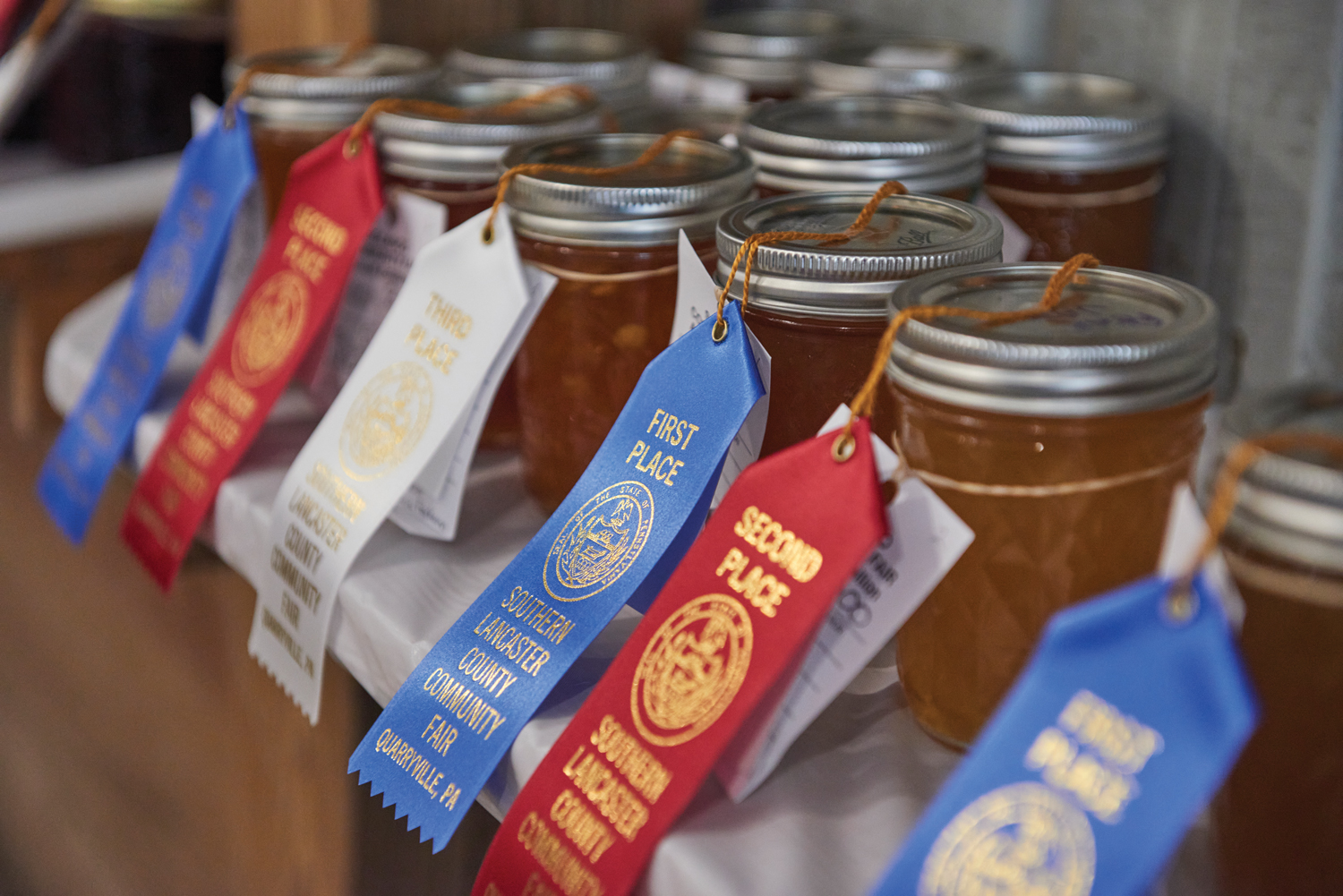
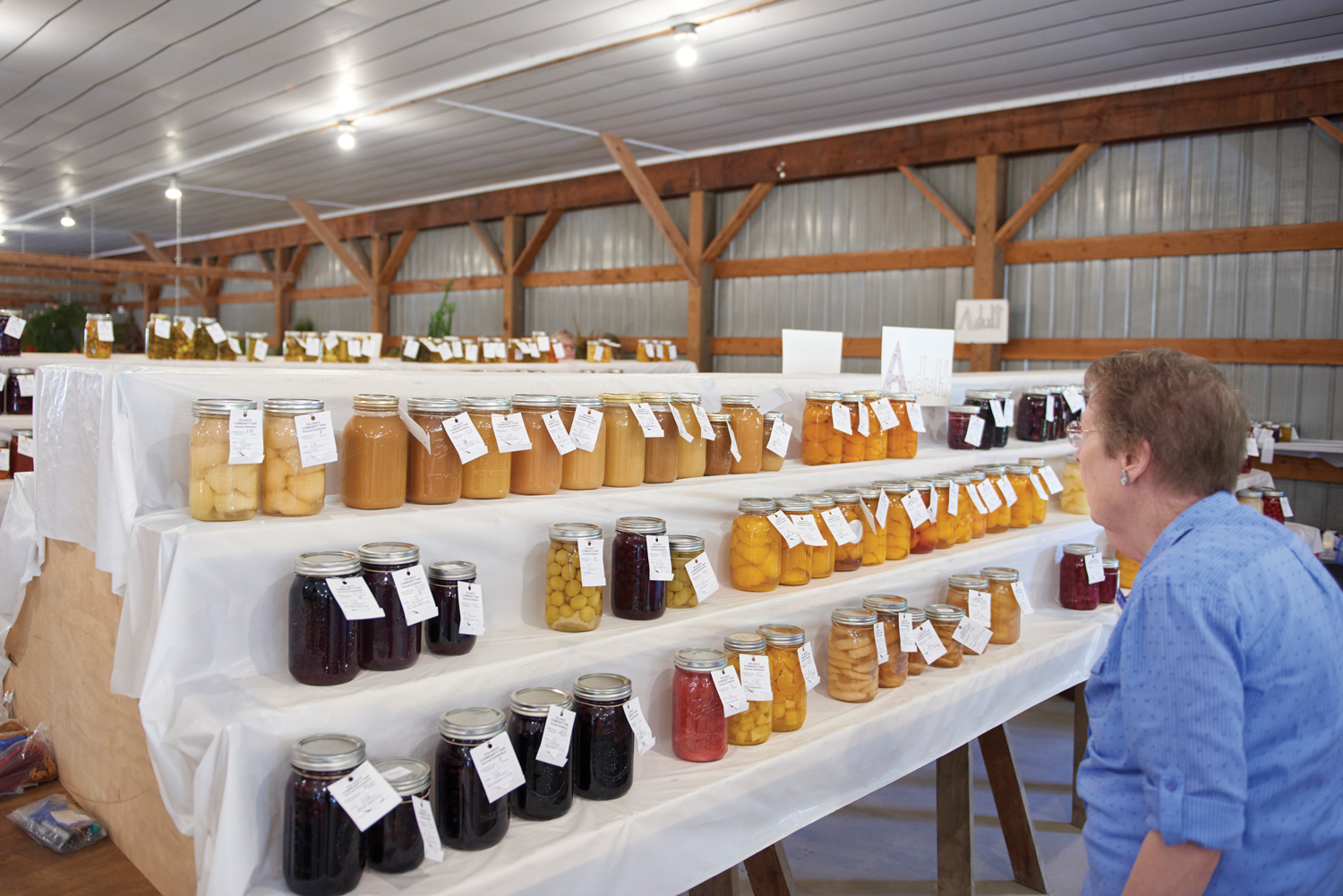
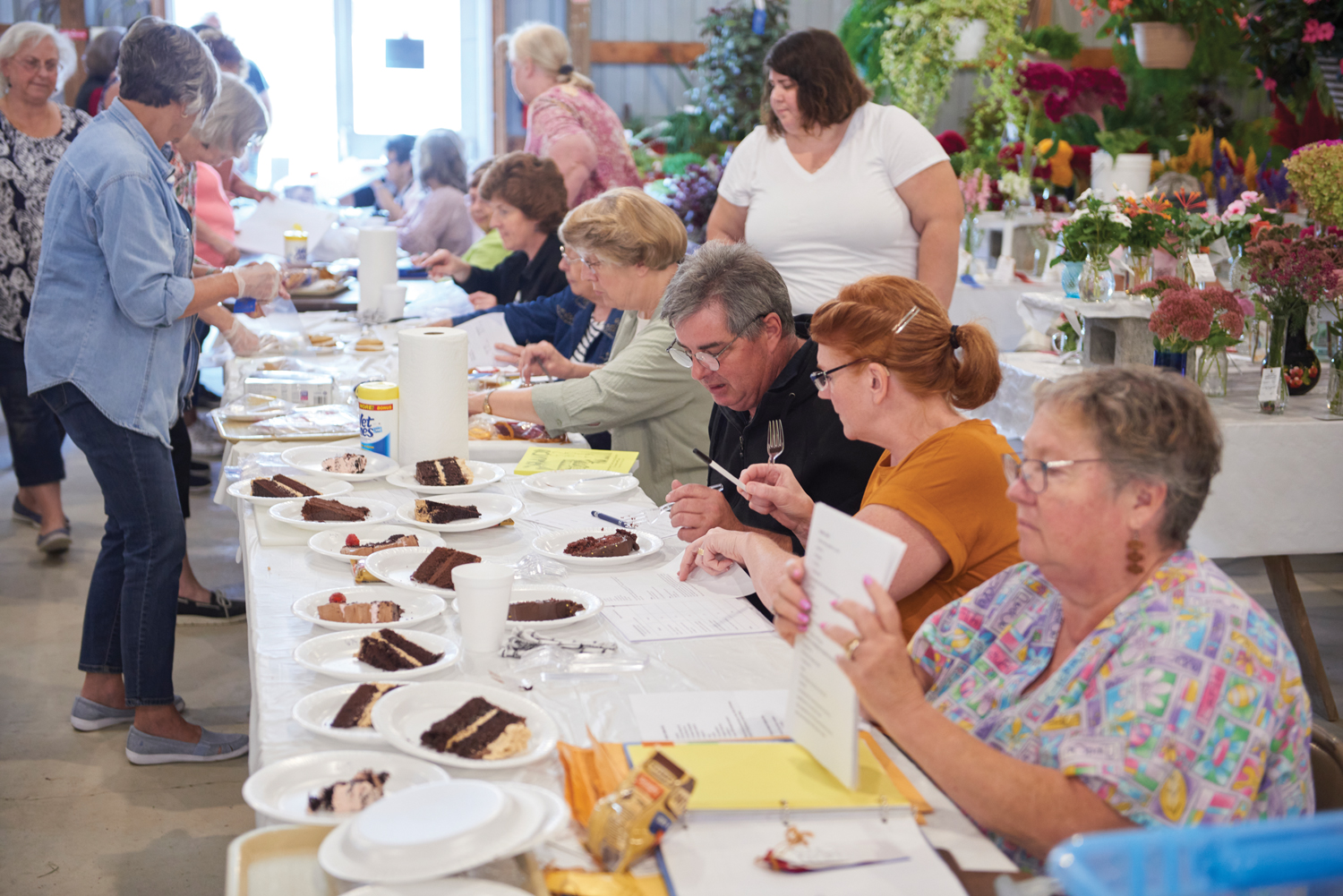
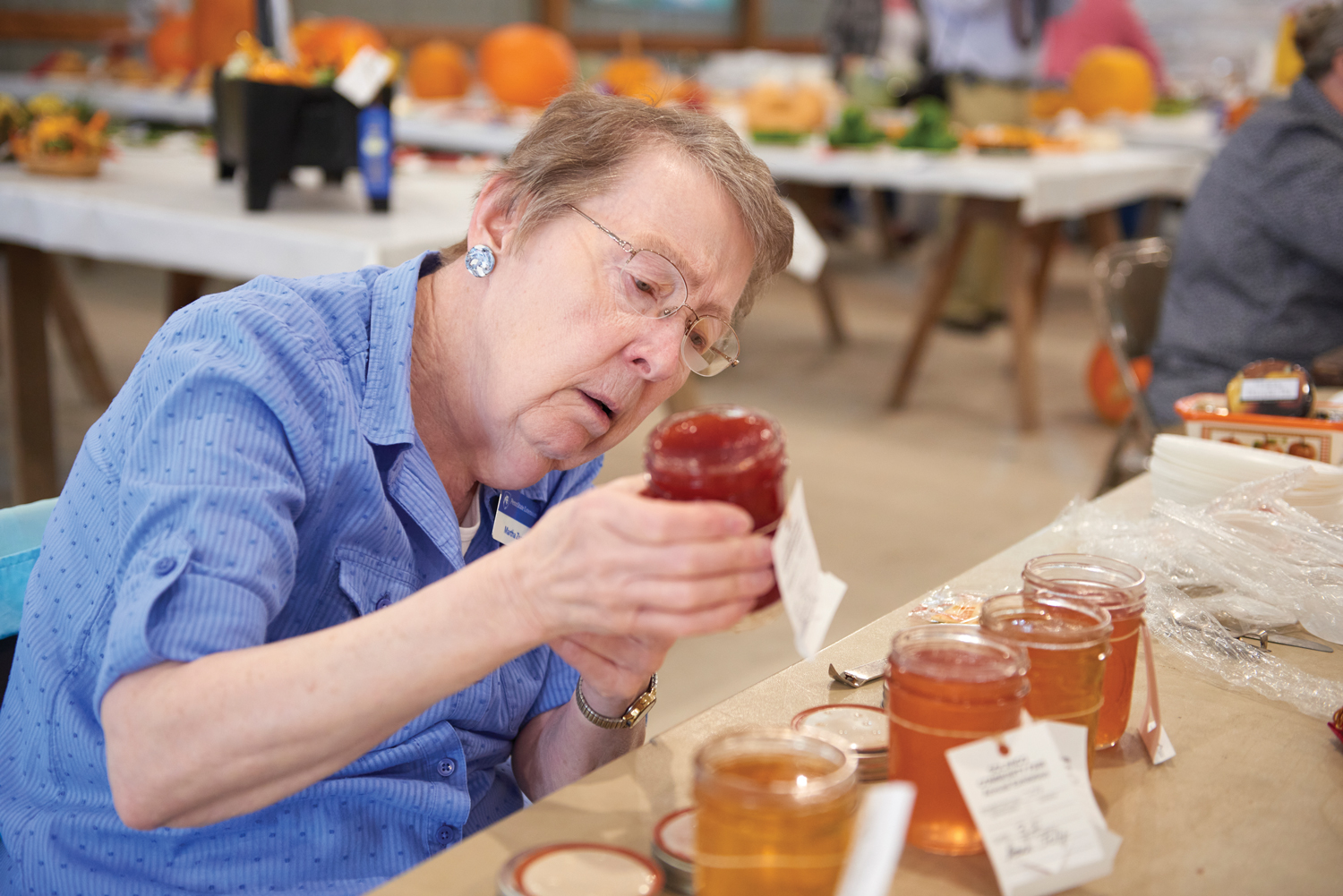
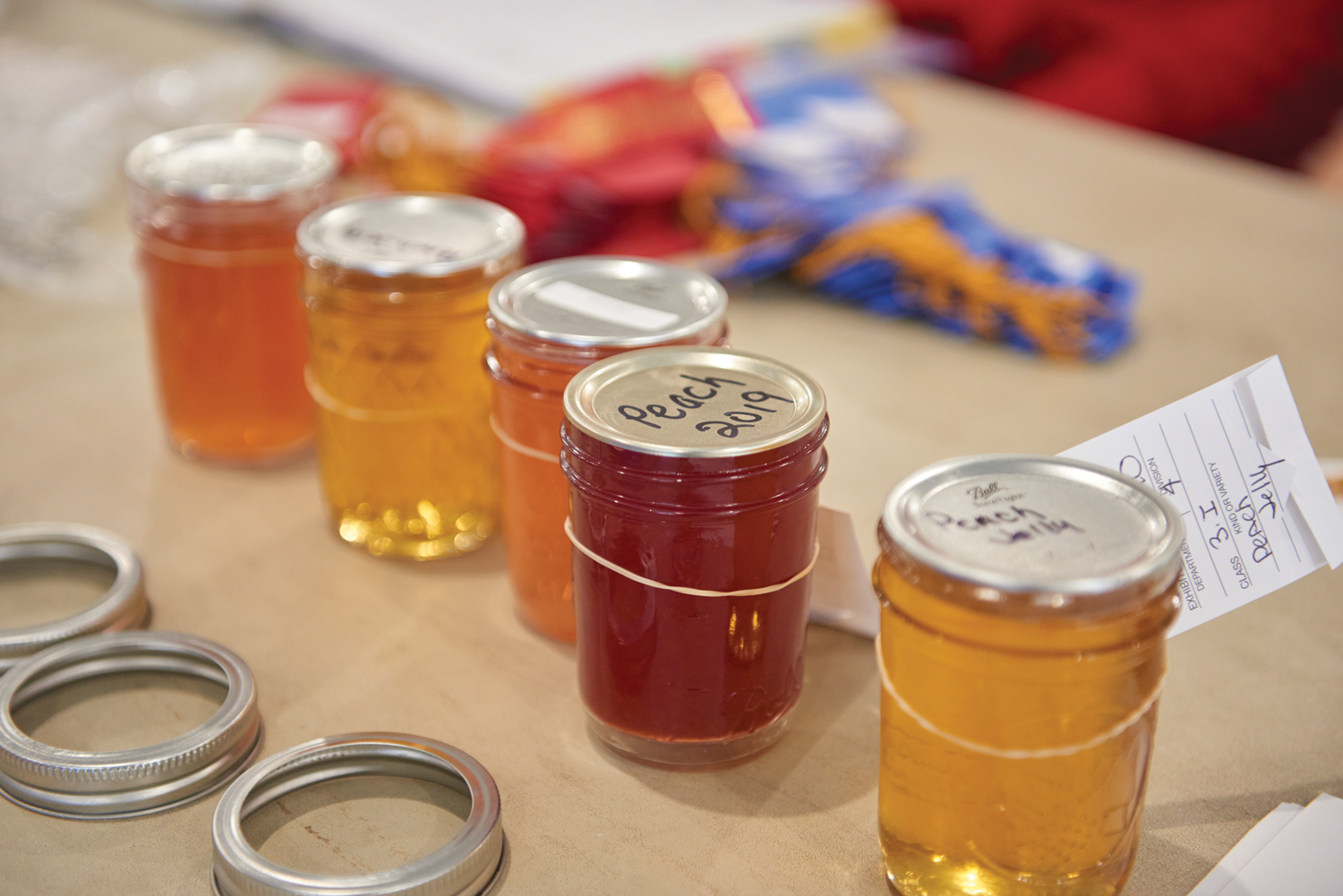
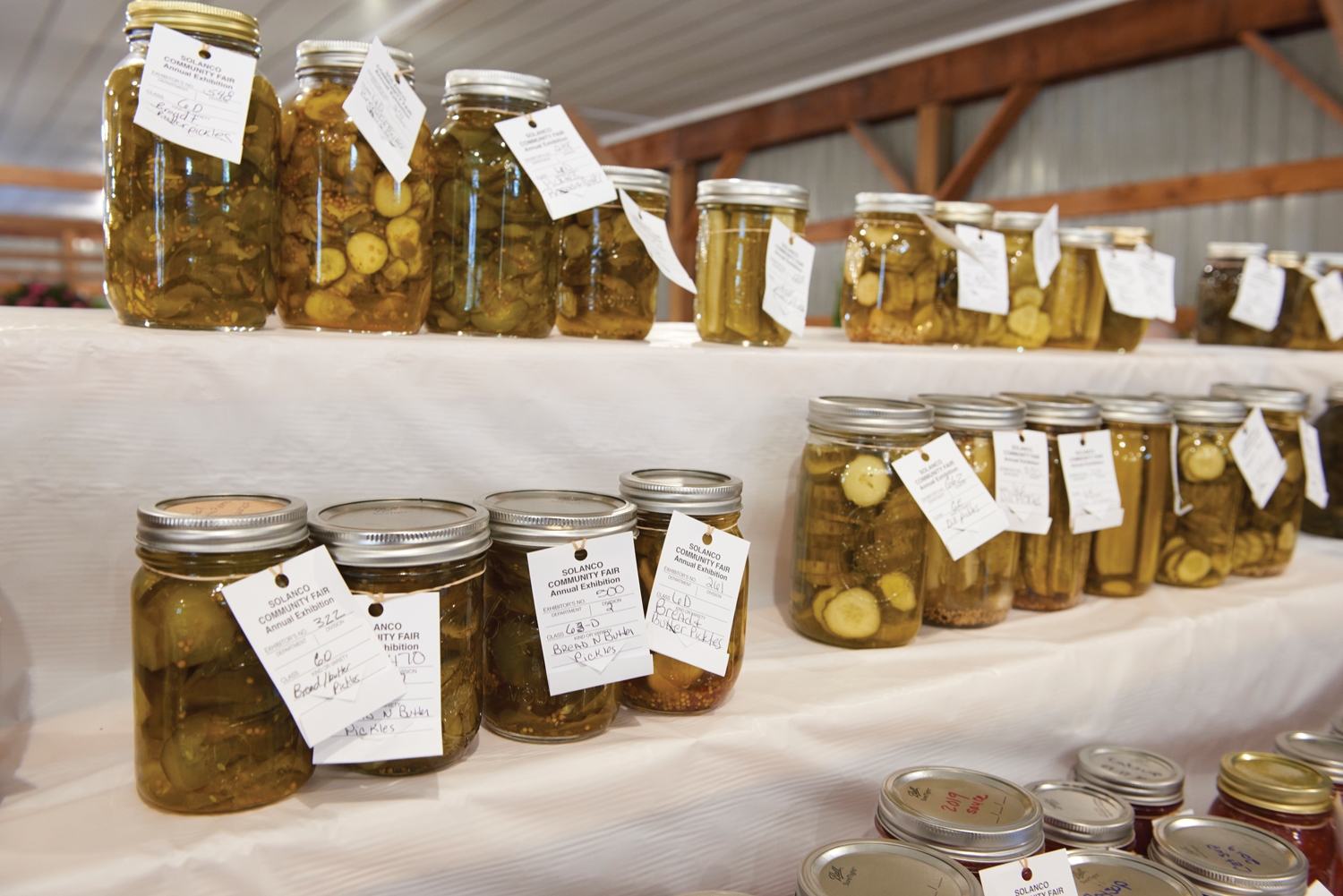
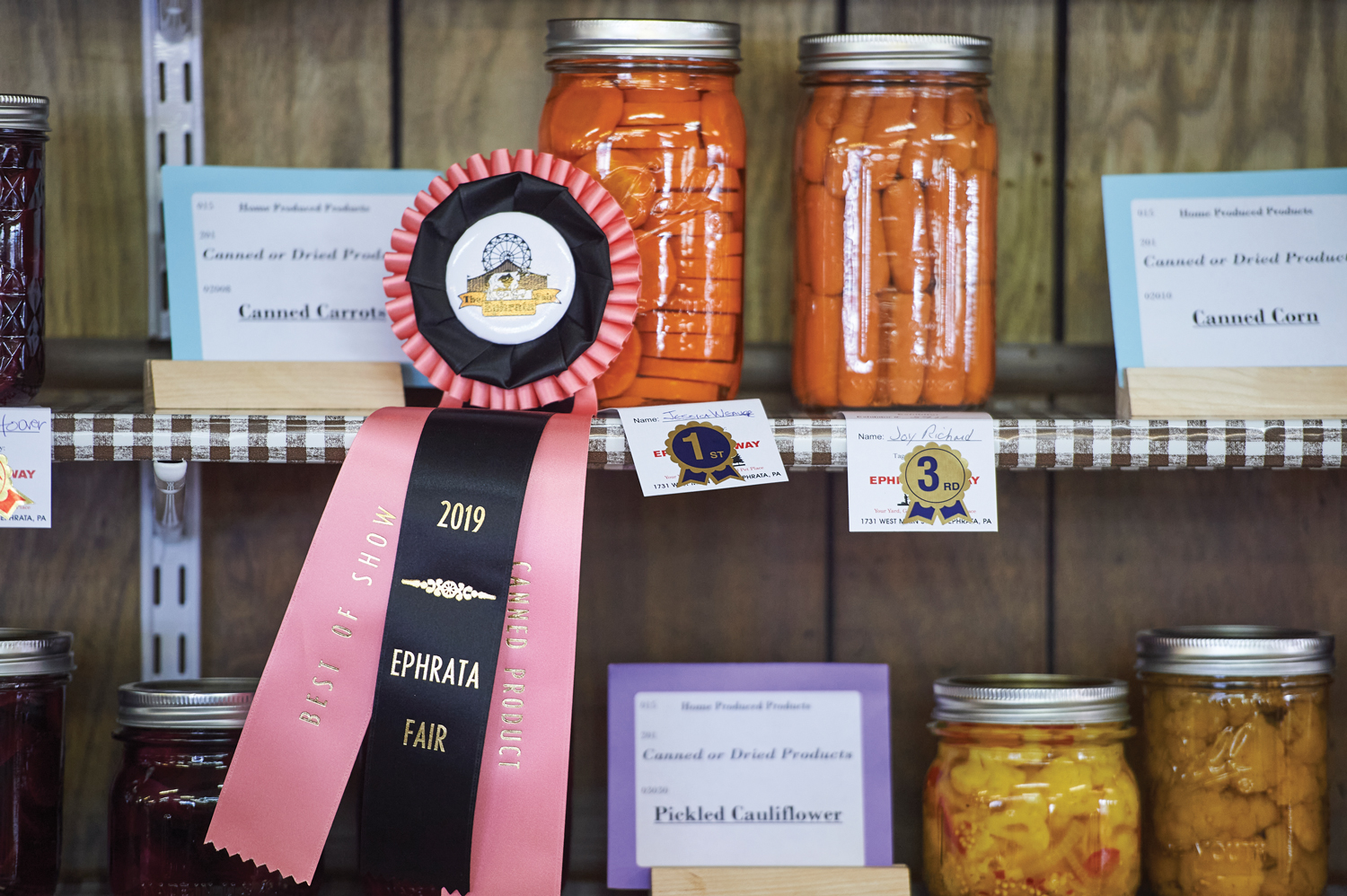
SHARE
PRINT